Discover the Bustling Energy of Hanoi
Hanoi, the capital of Vietnam, is a city where ancient history and vibrant modernity intertwine. From its historic landmarks to its dynamic street life, Hanoi offers an unforgettable experience that reflects the essence of Vietnamese culture. Among the best things to do in Vietnam, exploring Hanoi stands out as an essential part of any itinerary.Exploring the Old Quarter: The Heartbeat of Hanoi
The Old Quarter is the soul of Hanoi, a lively neighborhood where the city’s rich past meets the energy of contemporary life. This area is a labyrinth of narrow streets, each named after the goods that were once traded there. As you wander through these bustling lanes, you’ll encounter ancient temples tucked between colonial-era buildings and modern shops. The Old Quarter is also a culinary paradise—street vendors serve up steaming bowls of pho, crispy banh mi, and other local delicacies. Every corner you turn reveals a new discovery, whether it’s a hidden café, a traditional artisan shop, or a lively market brimming with fresh produce and handcrafted goods. Visiting the Old Quarter is undoubtedly one of the best things to do in Vietnam, offering a deep dive into the country’s cultural and historical fabric.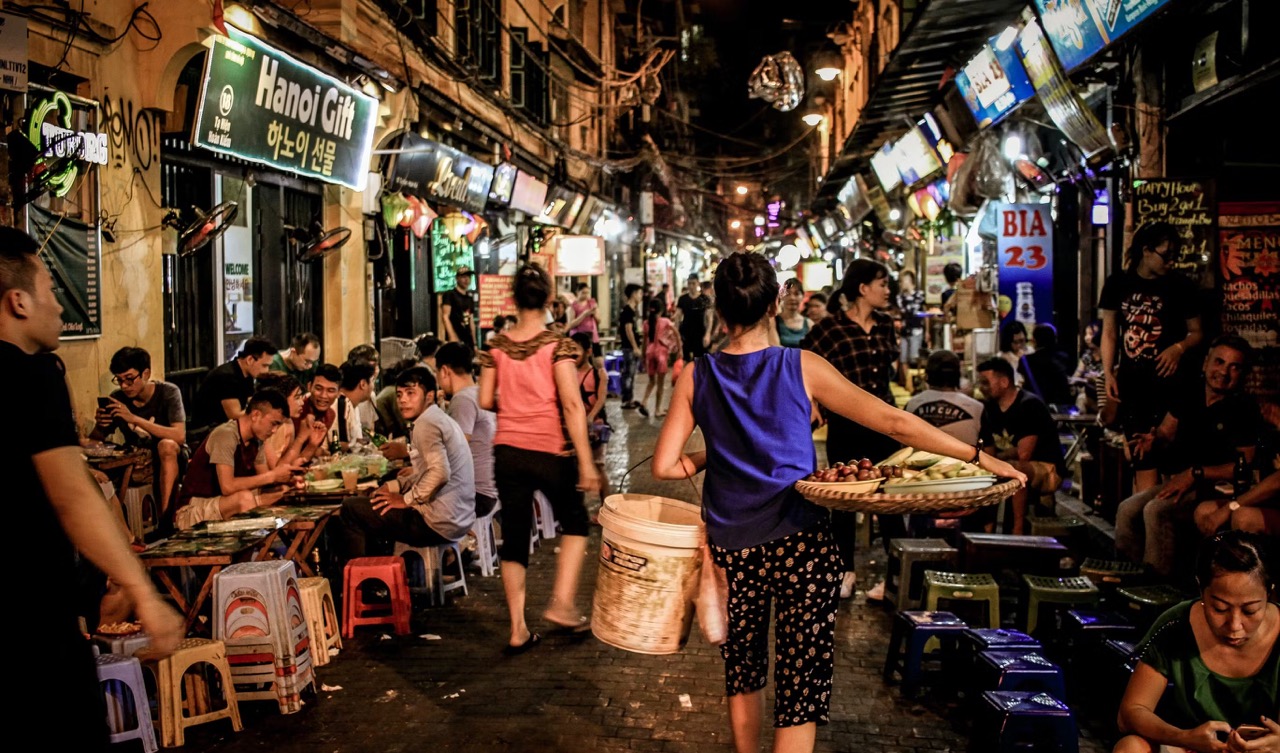
Old Quarter in Ha Noi
Hoan Kiem Lake: The Tranquil Heart of Hanoi
In the center of Hanoi lies Hoan Kiem Lake, a serene body of water that serves as the city’s spiritual and geographical heart. The lake is surrounded by lush greenery, providing a peaceful escape from the city’s hustle and bustle. Early in the morning, locals gather here to practice tai chi, jog, or simply enjoy the tranquility. The lake is also home to the Ngoc Son Temple, situated on a small island accessible by the iconic red Huc Bridge. This temple, dedicated to the national hero Tran Hung Dao, is steeped in legend and offers a glimpse into the spiritual life of the city. Visiting Hoan Kiem Lake is a must, not just for its beauty, but for the insight it provides into the rhythm of life in Hanoi.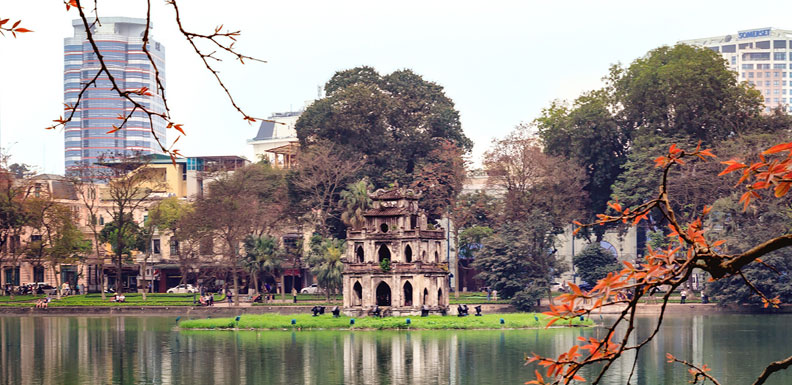
Hoan Kiem Lake, Hanoi
The Historic Ho Chi Minh Mausoleum: A Visit to Vietnam’s Revered Leader
The Ho Chi Minh Mausoleum is one of Hanoi’s most significant landmarks, a solemn and imposing structure that houses the embalmed body of Ho Chi Minh, the beloved leader of Vietnam. Visiting the mausoleum is a deeply respectful and somber experience, reflecting the profound impact Ho Chi Minh had on the country. The mausoleum, located in Ba Dinh Square, is surrounded by well-manicured gardens and guarded by soldiers in pristine white uniforms. Inside, the atmosphere is hushed as visitors pay their respects. The surrounding complex also includes the Ho Chi Minh Museum and the modest stilt house where he lived, offering a comprehensive look at his life and legacy.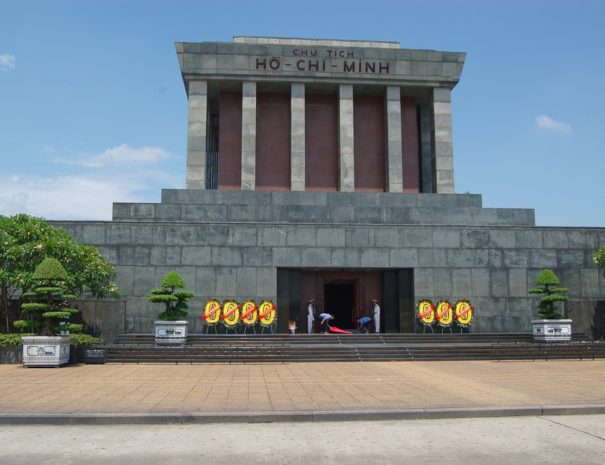
Ho Chi Minh Mausoleum
Traditional Water Puppet Show: A Window into Vietnam’s Cultural Heritage
Hanoi is famous for its traditional water puppet shows, an art form that dates back to the 11th century. Originally performed in flooded rice paddies, these shows depict scenes from rural life, folklore, and historical legends using wooden puppets that appear to dance on water. The Thang Long Water Puppet Theatre is the most renowned venue for this unique experience, where you can watch these colorful, intricately designed puppets tell stories accompanied by live traditional music. The performances are not only entertaining but also provide a fascinating glimpse into Vietnamese culture and traditions that have been passed down through generations.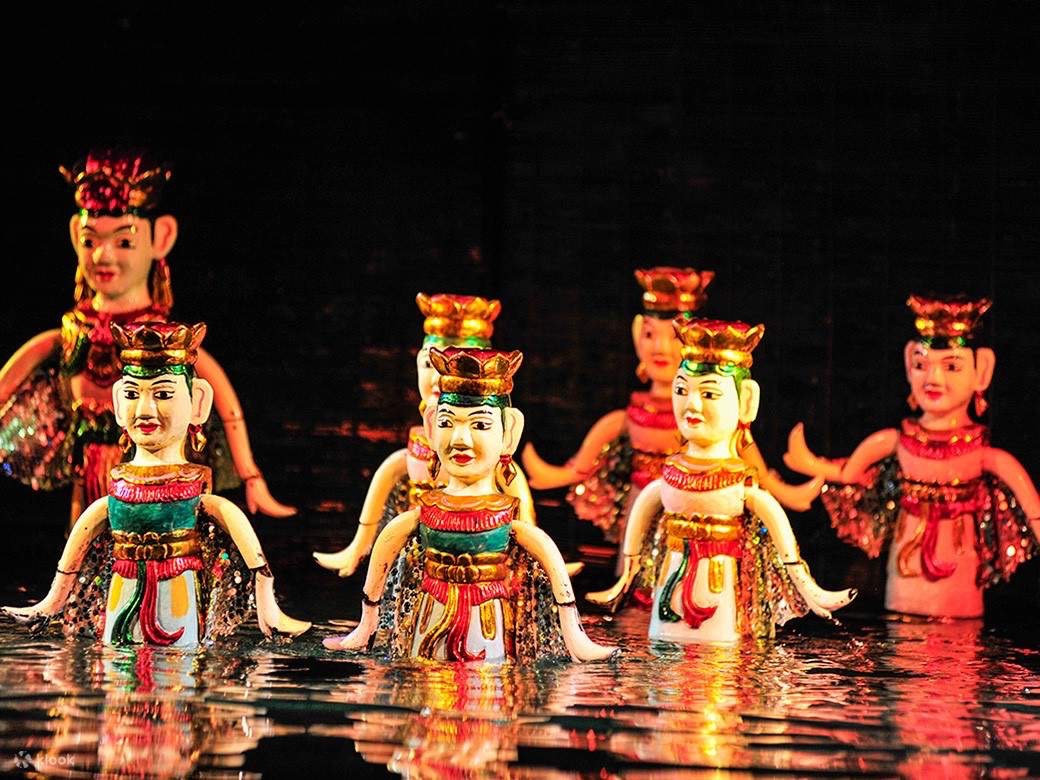
Traditional Water Puppet Show
Experience the Charm of Ho Chi Minh City
Visiting the War Remnants Museum: A Deep Dive into History The War Remnants Museum offers a powerful and poignant look into the Vietnam War from a perspective rarely seen in Western narratives. The museum’s exhibits include graphic photographs, harrowing accounts of wartime atrocities, and sobering displays of the war’s impact on civilians. As you walk through the halls, you’ll encounter various military equipment, including tanks, planes, and even the infamous “tiger cages” where prisoners were kept. This visit isn’t just about learning history; it’s about understanding the resilience and strength of the Vietnamese people in the face of overwhelming adversity.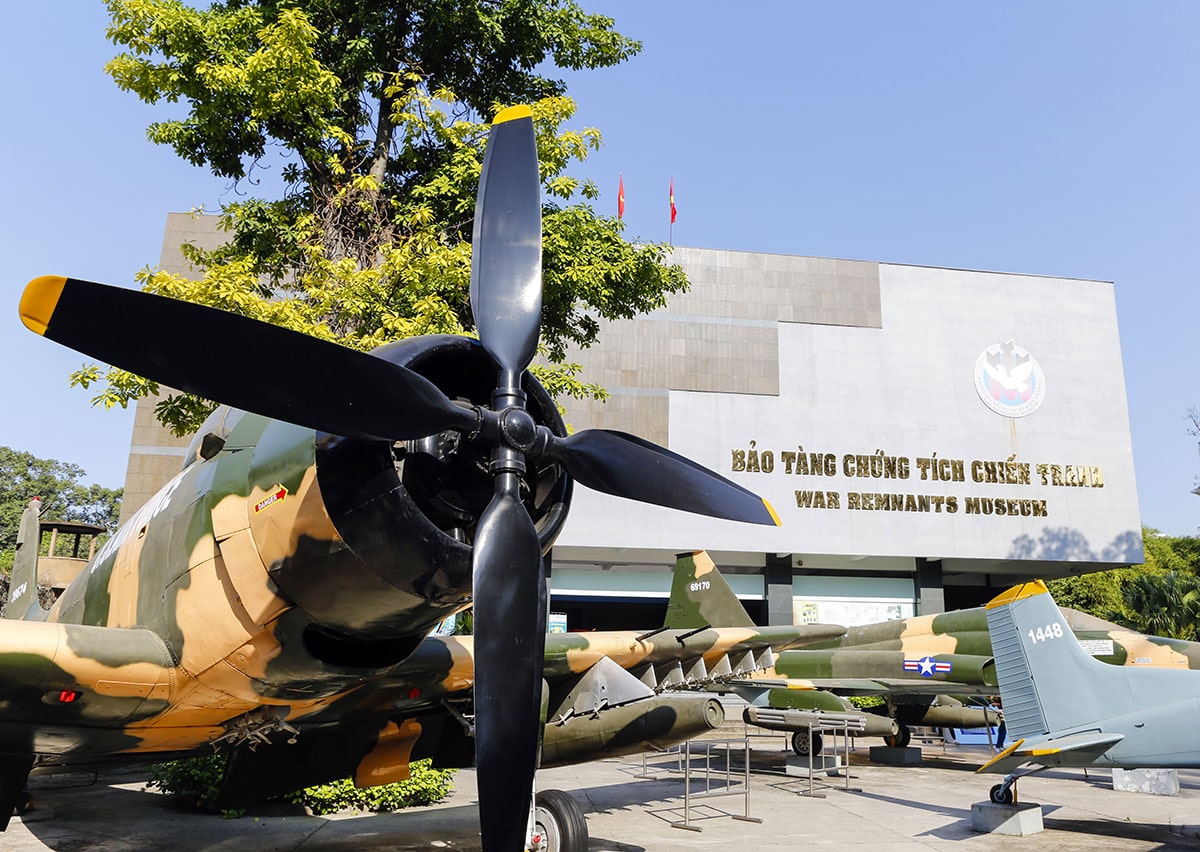
War Remnants Museum
Discovering the Cu Chi Tunnels: An Underground World of Resistance The Cu Chi Tunnels offer a unique glimpse into the ingenuity and determination of the Viet Cong during the Vietnam War. Spanning over 120 kilometers, this underground network was a crucial part of guerrilla warfare, allowing soldiers to launch surprise attacks and disappear without a trace. As you explore the tunnels, which have been preserved and slightly widened for tourists, you’ll get a feel for the claustrophobic conditions soldiers endured. The experience is both thrilling and enlightening, revealing the lengths to which the Vietnamese went to defend their country. For those brave enough, there’s even an opportunity to crawl through a section of the tunnel—a truly immersive way to appreciate the complexities of war. This adventure is often highlighted as one of the best things to do in Vietnam, especially for those interested in the country’s military history.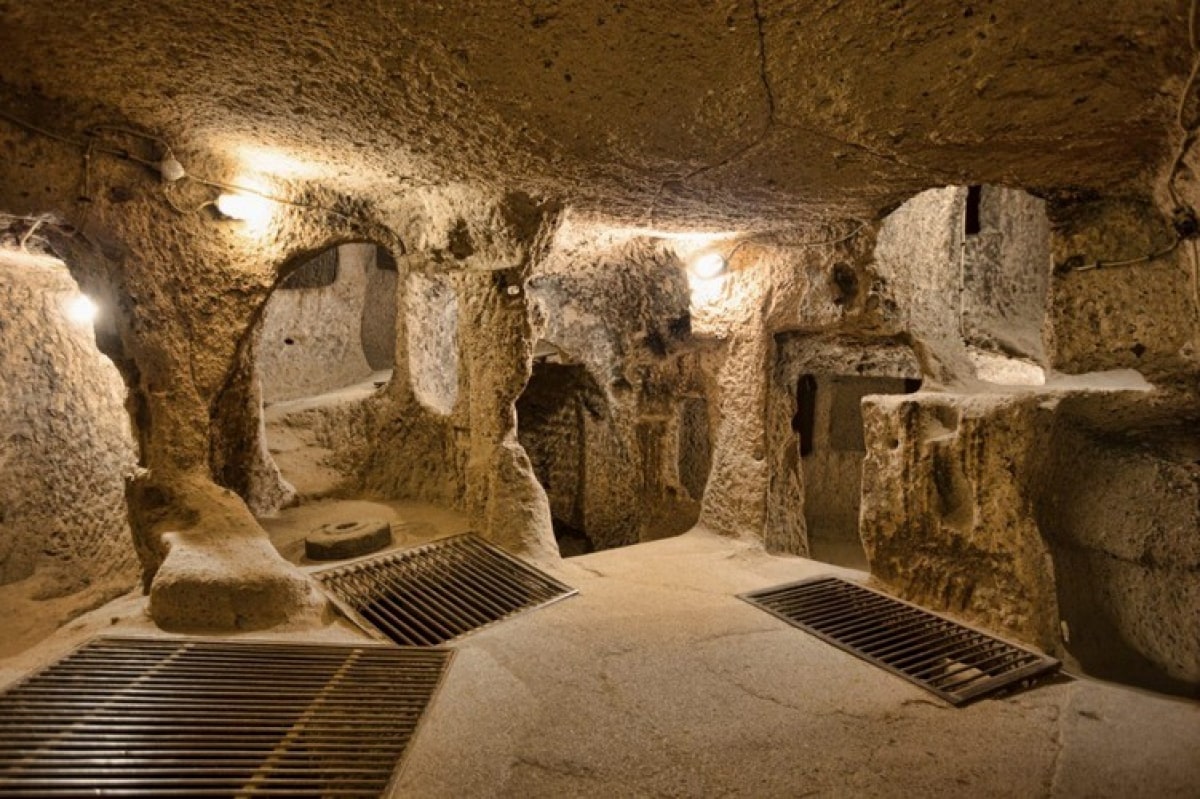
Cu Chi Tunnels
A Walk Along Nguyen Hue Walking Street: The Heartbeat of the City Nguyen Hue Walking Street is the vibrant pulse of Ho Chi Minh City, especially as the sun sets. This broad boulevard, flanked by modern skyscrapers and historic buildings, transforms into a lively gathering place where locals and tourists mingle amidst street performances, food vendors, and light displays. The street is also home to iconic landmarks like the People’s Committee Building, a stunning piece of French colonial architecture. Strolling down Nguyen Hue at night, you’ll be swept up in the energy of the city—families out for an evening walk, teenagers snapping selfies, and artists showcasing their talents. It’s the perfect spot to experience the contemporary culture of Ho Chi Minh City while still feeling the echoes of its storied past. Many consider a visit to Nguyen Hue Walking Street one of the best things to do in Vietnam, offering a mix of modern life and traditional charm.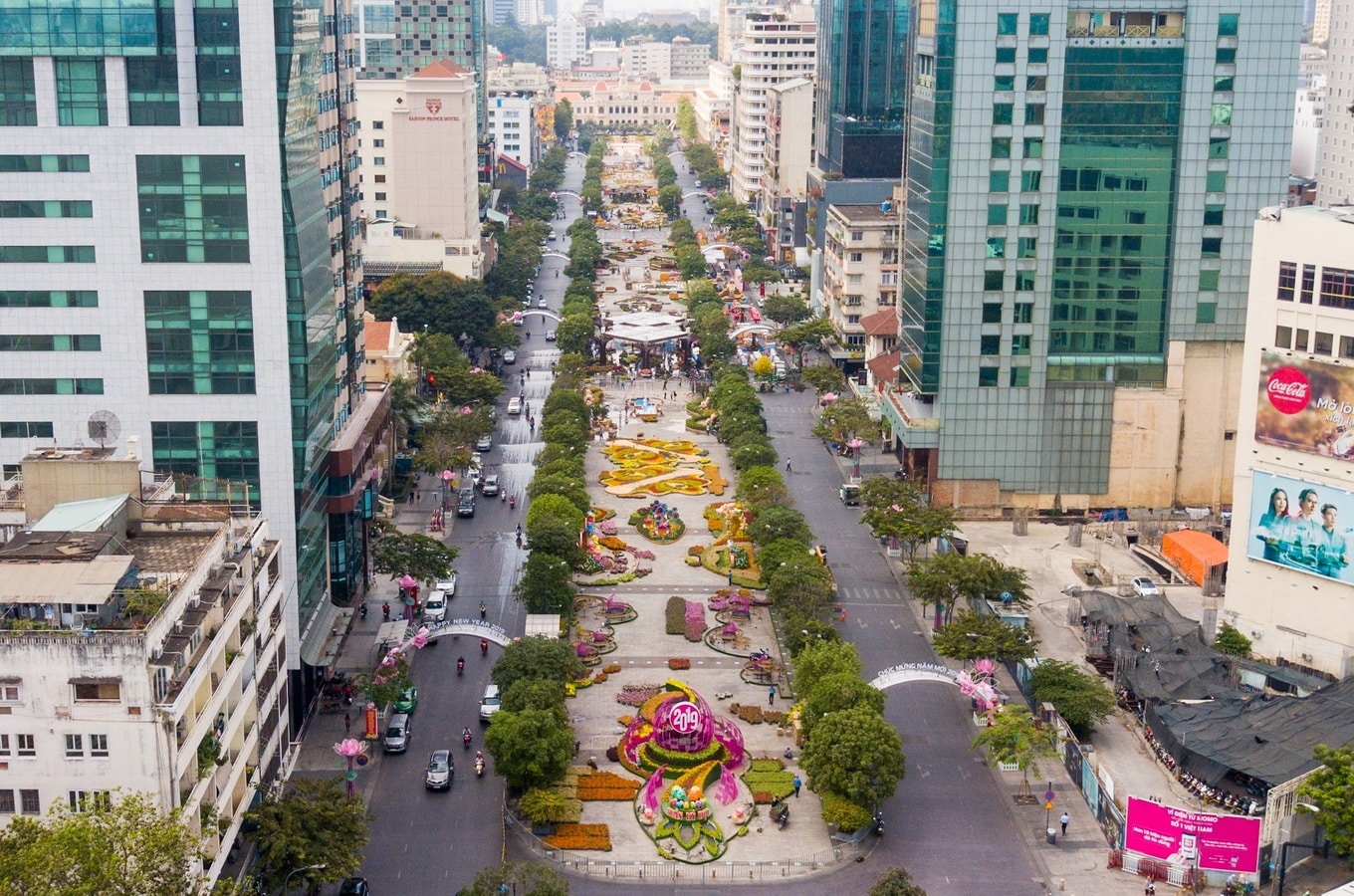
Nguyen Hue Walking Street
Ben Thanh Market: A Sensory Overload in the Heart of the City For an authentic taste of local life, a visit to Ben Thanh Market is a must. This bustling marketplace is a maze of stalls selling everything from fresh produce and spices to clothing and souvenirs. The aromas of street food, the vibrant colors of textiles, and the sounds of vendors calling out their wares create a sensory overload that’s quintessentially Ho Chi Minh City. Whether you’re looking to sample traditional Vietnamese dishes like pho or banh mi, or hunting for the perfect souvenir to take home, Ben Thanh offers an unfiltered glimpse into the daily lives of the city’s residents. Don’t forget to haggle—it’s part of the experience and can be a fun way to interact with the locals.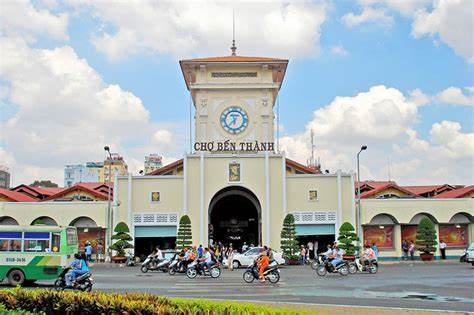
Ben Thanh Market
Exploring Ha Long Bay’s Limestone Islands: A UNESCO World Heritage Marvel
Ha Long Bay, situated in the Quang Ninh Province of northern Vietnam, is a breathtaking natural wonder known for its emerald waters and thousands of towering limestone karsts and isles in various shapes and sizes. As a UNESCO World Heritage site, Ha Long Bay’s striking landscape has captured the imagination of travelers from around the world. Each of the limestone islands is unique, often covered with lush greenery and home to secluded beaches, caves, and small fishing villages. To truly appreciate the splendor of these natural formations, a cruise through the bay is essential. These cruises allow you to glide past iconic sites such as the Fighting Cock Islet, the stone pillars that resemble a pair of roosters, and the majestic Ti Top Island, known for its panoramic views from the summit.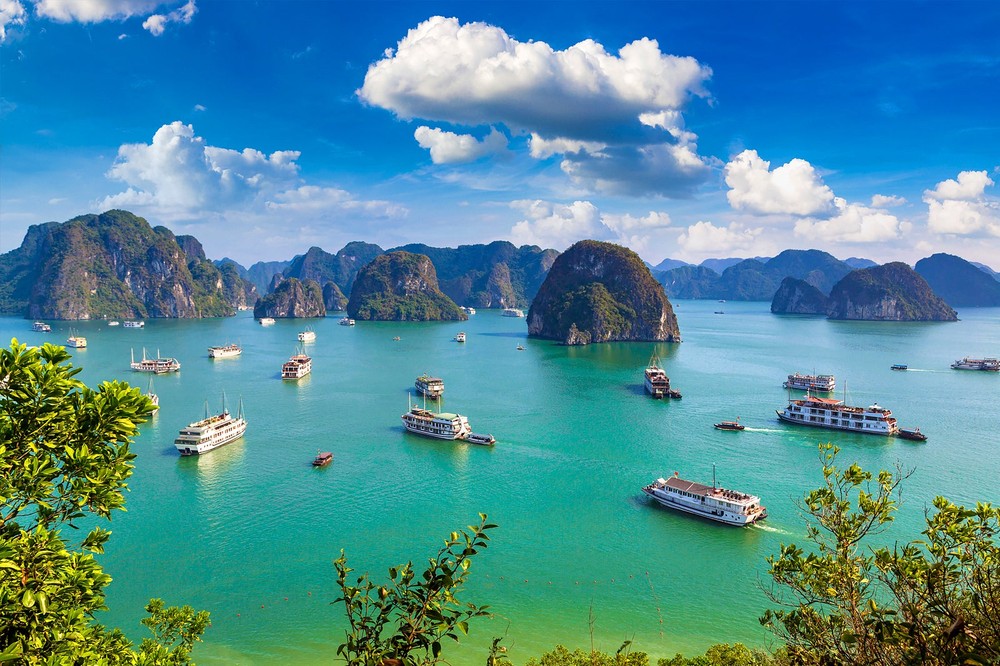
Ha Long Bay
Overnight Cruises: A Unique and Immersive Experience
One of the most remarkable ways to experience Ha Long Bay is by taking an overnight cruise. These cruises offer a more immersive and serene experience, allowing you to soak in the bay’s beauty at different times of the day. As the sun sets, the bay transforms into a mystical landscape with the limestone islands casting long shadows over the still waters. The night is equally enchanting, with the gentle sway of the boat and the distant sound of waves lapping against the rocks creating a tranquil ambiance. Overnight cruises often include luxurious accommodations, with cabins that offer private balconies and panoramic windows. You’ll enjoy gourmet meals featuring fresh seafood, prepared in traditional Vietnamese style, as you dine under the stars. In the morning, you can watch the sunrise over the bay, often accompanied by a Tai Chi session on the deck – a perfect way to start the day in this peaceful setting.Activities in Ha Long Bay: Kayaking, Swimming, and Caving for the Adventurous Spirit
Ha Long Bay is not just about scenic views; it’s also a playground for adventure enthusiasts. The bay’s calm waters are perfect for kayaking, allowing you to explore hidden caves and lagoons that are inaccessible by larger boats. Paddle through the narrow passageways of the Luon Cave, where you can spot monkeys and other wildlife, or venture into the Dark and Bright Caves, which open up to stunning lagoons surrounded by towering cliffs. Swimming is another popular activity, especially at beaches like Bai Chay and Ti Top, where the water is clear and inviting. For those who enjoy exploring, Ha Long Bay’s caves are a must-see. The Sung Sot Cave (Surprise Cave) is the largest and most famous, with its massive chambers filled with stalactites and stalagmites that create a surreal landscape. Another notable cave is the Thien Cung Cave (Heavenly Palace Cave), known for its intricate formations and colorful lighting, giving the appearance of an underground palace.Step Back in Time in Hoi An Ancient Town
The Allure of Hoi An’s Lantern Festival: Hoi An Ancient Town is renowned for its monthly Lantern Festival, held on the 14th day of each lunar month. As night falls, the streets of Hoi An are bathed in the warm, colorful glow of thousands of lanterns. The electric lights are turned off, and the town takes on a dreamy, ethereal atmosphere. Locals and tourists alike release floating lanterns onto the Thu Bon River, making wishes as the delicate lights drift downstream. The festival is not only a visual spectacle but also a cultural experience, with traditional music performances, folk games, and offerings to ancestors at various temples. The combination of flickering lanterns, serene river views, and the historical backdrop of Hoi An makes this event a photographer’s paradise and an unforgettable experience.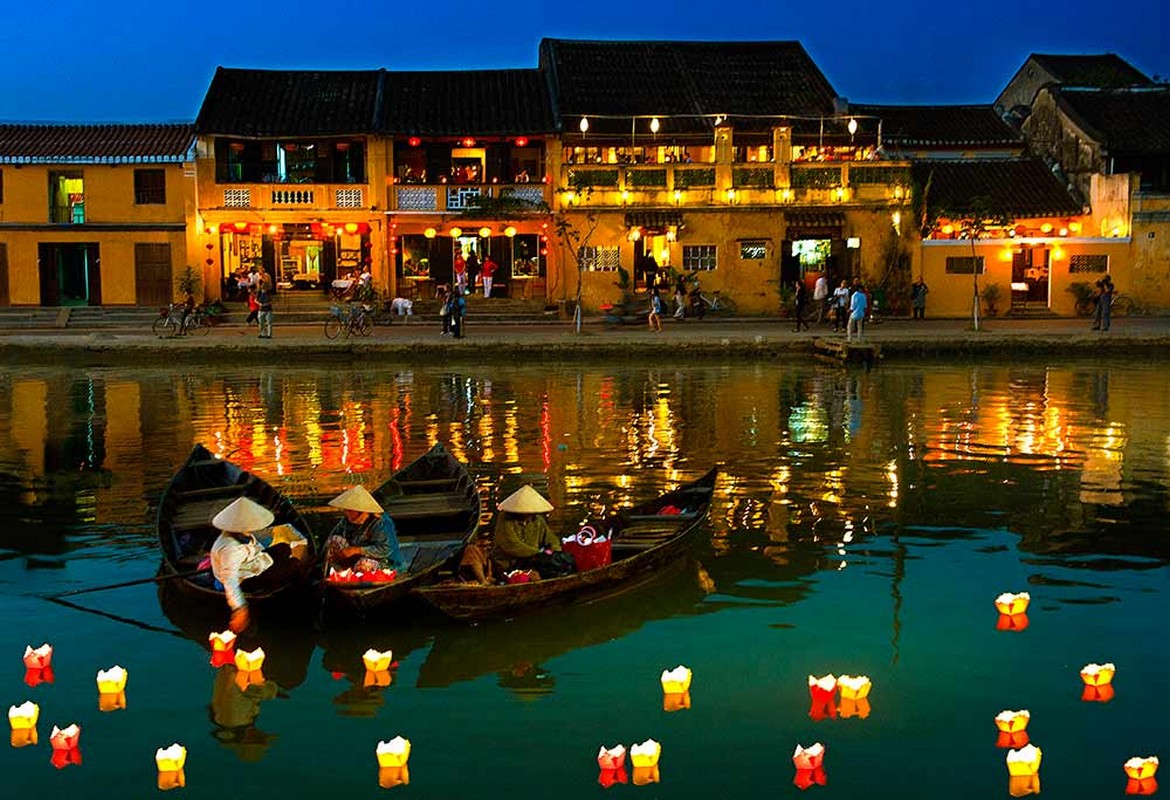
Hoi An Ancient Town
Visiting the Japanese Covered Bridge: The Japanese Covered Bridge, or Chùa Cầu, is one of Hoi An’s most iconic landmarks and a testament to the town’s rich multicultural history. Constructed in the early 18th century by the Japanese community, the bridge was built to connect the Japanese and Chinese quarters of the town. Its unique architectural design, featuring a curved wooden roof and intricate carvings, reflects a blend of Japanese, Chinese, and Vietnamese styles. Inside the bridge, there’s a small shrine dedicated to Tran Vo Bac De, the Taoist god of weather, who is believed to protect the bridge and the town from floods. Walking across this ancient bridge, you can almost feel the echoes of the past and the cultural exchanges that shaped Hoi An’s history. It’s a must-visit site for anyone looking to delve deeper into the town’s heritage.Tailor-Made Clothing: A Unique Experience in Hoi An: Hoi An is globally famous for its tailor-made clothing, offering an unparalleled shopping experience. The town boasts hundreds of tailor shops where skilled craftsmen can create custom garments to suit your exact specifications. Whether you’re looking for a sharp suit, an elegant dress, or traditional Vietnamese attire like the Áo dài, Hoi An’s tailors can bring your vision to life, often in just 24 hours. The process is personalized, starting with a consultation to choose fabrics and styles, followed by precise measurements. You’ll then return for fittings to ensure a perfect fit. This bespoke experience is not only about getting a unique piece of clothing but also about engaging with local artisans who uphold centuries-old traditions of craftsmanship. Taking home a tailor-made garment from Hoi An is like bringing a piece of the town’s artistic soul with you.Unwind on the Stunning Beaches of Da Nang
My Khe Beach: A Tropical Haven Recognized globally as one of the most beautiful beaches, My Khe Beach is a gem in Da Nang, boasting an idyllic combination of powdery white sands and azure waters. This tropical paradise stretches over 20 miles along the coast, offering a serene escape with its gentle waves and inviting atmosphere. Whether you’re seeking a peaceful spot to sunbathe under the warm Vietnamese sun or looking to dive into thrilling water sports like surfing or jet skiing, My Khe Beach caters to every type of beachgoer. Early morning walks here offer a spectacular sunrise, while evenings provide a tranquil setting to unwind as the sun dips below the horizon. The beach is also dotted with cafes and seafood restaurants, where you can indulge in fresh, local delicacies while enjoying the sea breeze.Marble Mountains: Where Nature Meets Spirituality Just a short drive from Da Nang’s bustling city center, the Marble Mountains offer a unique blend of natural beauty and spiritual significance. These five majestic hills, named after the elements metal, wood, water, fire, and earth, are composed of marble and limestone, creating a dramatic landscape that beckons explorers and pilgrims alike. The mountains are riddled with caves and tunnels, some of which house ancient Buddhist shrines that offer a serene environment for meditation and reflection. Climbing to the top of Thuy Son, the largest of the five mountains, rewards visitors with breathtaking panoramic views of Da Nang, the coastline, and the lush surrounding countryside. Each step on the ascent reveals intricate carvings, statues, and pagodas that have stood the test of time, making this a place where history and spirituality intertwine with the natural world.Ba Na Hills: The Allure of the Golden Bridge and Beyond Perched high in the Truong Son Mountains, Ba Na Hills is more than just a retreat from the tropical heat of Da Nang—it’s a destination in itself. The cool climate, stunning gardens, and rich history make it a must-visit, but the real star is the Golden Bridge. This architectural marvel, seemingly held aloft by giant stone hands, offers visitors an unforgettable experience as they walk above the clouds, with sweeping views of the surrounding mountains and forests. The French village at Ba Na Hills transports you back in time with its European-style architecture, while the amusement park, complete with a cable car ride and a variety of attractions, ensures fun for visitors of all ages. Whether you’re exploring the historic wine cellars, wandering through the meticulously landscaped gardens, or simply enjoying the crisp mountain air, Ba Na Hills provides a perfect blend of adventure and relaxation.Explore the Imperial City of Hue: A Detailed Guide
The Majestic Hue Citadel: A Journey into Vietnam’s Imperial History
The Hue Citadel, a UNESCO World Heritage site, was once the political, cultural, and spiritual heart of the Nguyen Dynasty, which ruled Vietnam from 1802 to 1945. This grand fortress, surrounded by imposing walls and a moat, covers an area of about 520 hectares. The Citadel is divided into three main parts: the Imperial City, the Forbidden Purple City, and the Civic City.- The Imperial City: This inner sanctum of the Citadel was where the emperor conducted state affairs and hosted foreign dignitaries. It’s home to several key structures, including the Ngo Mon Gate, Thai Hoa Palace (Hall of Supreme Harmony), and the Mieu Temple, where the Nguyen emperors are worshipped. Visiting these structures is considered one of the best things to do in Vietnam for history enthusiasts.
- The Forbidden Purple City: Reserved exclusively for the emperor and his concubines, this area was akin to the Forbidden City in Beijing. While much of it was destroyed during wars, restoration efforts are ongoing, allowing visitors to glimpse its former grandeur. Exploring this area offers a profound sense of Vietnam’s imperial history and is undoubtedly among the best things to do in Vietnam.
- Walls and Gates: The Citadel is encircled by a nearly 10-kilometer-long wall, punctuated by ten gates, each with its own significance. The Ngo Mon Gate, the main entrance, is the most famous, offering a grand view of the Flag Tower.
Visiting the Royal Tombs: A Harmonious Blend of Architecture and Nature
The Royal Tombs of the Nguyen emperors are spread along the banks of the Perfume River, each reflecting the unique personality and preferences of the emperor it commemorates. These tombs are not merely places of burial but are also considered palatial retreats for the afterlife, meticulously designed to ensure peace and prosperity in the next world. Exploring these tombs is undoubtedly one of the best things to do in Vietnam, offering a deep dive into the country’s imperial history and architectural grandeur.- Tomb of Emperor Minh Mang: Known for its symmetrical layout and tranquil setting, Minh Mang’s tomb is a masterpiece of landscape architecture. The tomb complex consists of palaces, temples, and pavilions set amidst pine forests and lotus ponds, embodying a perfect balance of man-made and natural beauty. For history enthusiasts, visiting this tomb is among the best things to do in Vietnam, as it provides a glimpse into the aesthetic sensibilities of the Nguyen dynasty.
- Tomb of Emperor Khai Dinh: Khai Dinh’s tomb is a striking blend of Vietnamese and Western architectural styles, reflecting the emperor’s affinity for French culture. The tomb is adorned with intricate carvings, vibrant frescoes, and the centerpiece, a lavish gold-gilded statue of the emperor. Despite being the smallest of the royal tombs, it’s one of the most elaborate and impressive, making it a must-see for those seeking the best things to do in Vietnam.
- Tomb of Emperor Tu Duc: Tu Duc’s tomb is perhaps the most romantic, designed as a retreat for the emperor during his lifetime. Surrounded by a lake, frangipani trees, and a pine forest, the tomb exudes a peaceful atmosphere. The complex includes a pavilion where the emperor used to compose poetry, adding a personal touch to this royal resting place.
Cruising the Perfume River: A Tranquil Journey Through Hue’s Countryside
A cruise on the Perfume River offers a serene escape into the natural beauty of Hue, as well as an opportunity to visit several historical sites along its banks. The river got its name from the fragrant flowers that used to fall into the water, giving it a sweet, pleasant aroma.- Thien Mu Pagoda: The most famous pagoda in Hue, Thien Mu Pagoda, is located on Ha Khe Hill, overlooking the Perfume River. This seven-story pagoda is an iconic symbol of the city and is closely associated with many important events in Vietnamese history. The pagoda complex includes several beautiful structures, such as the Phuoc Duyen Tower and the Dai Hung Shrine.
- Hon Chen Temple: Situated on the riverbank, this temple is dedicated to the goddess Po Nagar and is a vibrant place of worship. The temple is known for its annual festival, where devotees come to honor the goddess with colorful processions on the river.
- Vong Canh Hill: A stop at Vong Canh Hill offers a panoramic view of the Perfume River and the surrounding countryside, including several of the royal tombs. It’s a perfect spot to relax and enjoy the peaceful ambiance.
